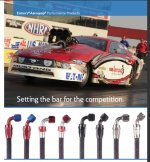Reading an article on the Marine Installers Rant blog this morning reminded me of a common problem with sharp/bulky cable ties and I sure seem to use a ton of them bundling wires or hoses together on the boat and motorcycles as I tear into things to improve them or just figure them out.
This design is what I will try to use from now on:
http://cableorganizer.com/act/cobra-cable-ties/
And because I have not seen them in a store, I will be paying more to ship them than to buy them but sometimes that is the price of picky.
This design is what I will try to use from now on:
http://cableorganizer.com/act/cobra-cable-ties/
And because I have not seen them in a store, I will be paying more to ship them than to buy them but sometimes that is the price of picky.

